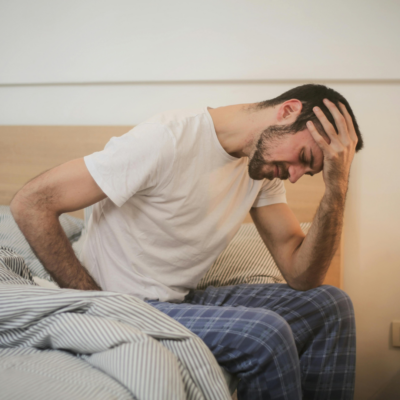Signs of Opioid Withdrawal

The opioid epidemic continues to devastate communities worldwide, with men particularly vulnerable due to societal expectations, emotional suppression, and stigmas surrounding mental health. Co-occurring mental health disorders, such as depression, anxiety, or PTSD, frequently intertwine with opioid abuse, creating a complex web of challenges that demand specialized attention. Data from the National Survey on Drug Use and Health (NSDUH) revealed significantly higher rates of lifetime and past-year prescription opioid misuse among men compared to women. While men are less likely than women to report opioid use overall, they are significantly more likely to misuse opioids and do so primarily to feel good or get high. Among past-year opioid users, men are also more likely to meet DSM-IV criteria for opioid dependence. These findings, consistent with research on masculinity norms and health behaviors, emphasize the need for gender-sensitive interventions to address the unique challenges faced by men in combating addiction and co-occurring disorders. Recognizing withdrawal symptoms is a crucial first step in addressing these interconnected challenges.
Common Signs of Opioid Withdrawal
Opioid withdrawal symptoms vary in intensity and duration, depending on factors such as the type of opioid used, the dosage, and the length of dependency. Withdrawal can be physically, emotionally, and behaviorally taxing, making professional support essential for successful recovery.
- Physical Symptoms:
- Muscle aches and cramps: Often concentrated in the back and legs, these pains can severely limit mobility and comfort, especially for men who may feel pressured to endure pain silently.
- Sweating: An overactive sweat response, aimed at detoxification, can cause dehydration if not managed, adding to physical exhaustion.
- Nausea and vomiting: Persistent gastrointestinal distress can make maintaining proper nutrition a challenge, further complicating recovery.
- Diarrhea: Coupled with nausea, this symptom accelerates fluid loss, leading to fatigue and weakness.
- Chills and goosebumps: Temperature dysregulation adds another layer of discomfort, often mistaken for flu-like symptoms.
- Yawning: This reflects the body’s heightened stress and fatigue levels, a subtle yet telling sign of withdrawal.
- Runny nose: Often mistaken for a cold, this symptom is the body’s way of clearing residual toxins.
- Increased heart rate and blood pressure: These changes signal heightened physiological stress, demanding close medical monitoring.
- Psychological Symptoms:
- Anxiety: Men may experience acute unease or panic, exacerbated by cultural norms discouraging emotional expression, making it harder to seek help.
- Restlessness: Constant fidgeting or an inability to relax disrupts daily life and sleep, contributing to further exhaustion.
- Insomnia: The inability to sleep despite physical exhaustion deepens emotional strain and hinders recovery efforts.
- Irritability: Emotional volatility can strain personal and professional relationships, creating additional stressors.
- Cravings for opioids: These intense urges are a primary driver of relapse without proper intervention, particularly for men who misuse opioids to escape emotional pain.
- Depression: Underlying sadness or hopelessness can hinder long-term recovery if not addressed through therapy and support.
- Behavioral Symptoms:
- Agitation: Outbursts of frustration or anger often occur as the body struggles to adapt, reflecting deeper emotional struggles.
- Difficulty concentrating: Mental fog affects productivity and decision-making, which can be particularly distressing for men who tie their self-worth to professional success.
- Social withdrawal: Isolation driven by shame or guilt compounds emotional challenges, emphasizing the need for supportive peer groups.
These symptoms can appear within 6 to 12 hours after the last dose and typically peak within 48 to 72 hours. While most physical symptoms subside within a week, the emotional and psychological effects often persist, underscoring the importance of comprehensive treatment.
Why Professional Treatment is Essential
The intensity of opioid withdrawal can drive individuals to relapse without proper support. Professional treatment facilities offer medical supervision, counseling, and Medically Assisted Treatment (MAT). MAT integrates medications like methadone, buprenorphine, or naltrexone with therapy to ease withdrawal symptoms, reduce cravings, and stabilize patients, providing a foundation for sustainable recovery. These services ensure a safer detox process, allowing individuals to focus on their emotional and psychological rehabilitation. According to NIDA’s 2023 findings, men died of opioid overdose at rates 2-3 times greater than women in the U.S. during 2020-2021, further highlighting the urgency of tailored interventions for men. Addressing opioid misuse alongside co-occurring disorders through tailored interventions can help dismantle barriers rooted in masculinity norms and promote holistic healing.
Taking the First Step
If you or someone you know is grappling with opioid withdrawal from opioid abuse, seeking professional help is critical. All-male rehab facilities can offer a unique advantage for men by fostering a supportive environment free from societal judgments. These settings encourage open dialogue about shared struggles, including emotional suppression and societal pressures. Additionally, such programs often address co-occurring disorders alongside addiction, ensuring a holistic approach to healing. Tailored programs for men can significantly alleviate the burden of the opioid epidemic, providing the structure and care necessary to reclaim a fulfilling life.




